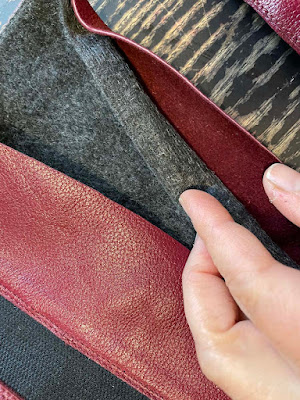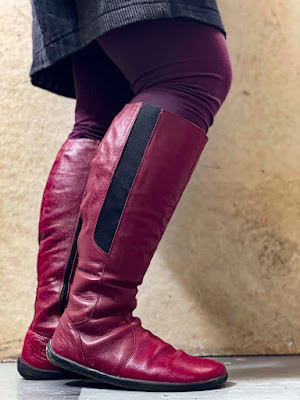Okay, spring can come now, I'm ready!
This is m7969, which is must be something of a blockbuster hit for McCalls, it is all over Instagram. With sweet sleeve shape and easy, flattering silhouette that seems to look good on everyone, I was smitten and had to give it a try.
I purchased a paper pattern months ago, but the yellow tissue and newsprint directions were bringing up memories of frustration and disappointment from my youthful attempts at sewing. I also just really dislike working with that fragile, crinkly tissue paper. When Minerva made the PDF available with their newsletter, I finally felt empowered to move ahead.
Of course I made View A (like everyone else!) but I subbed in the skirt from the Closet Core Elodie wrap dress because I don't like gathered skirts. I can't really even say why, but every time I make a dress with a gathered skirt, I wear it once and it sits in my closet until I change it out.
After looking at other blogger's versions, I decided go for sewing to my measurements, which seemed likely to turn out pleasantly oversized. That put me at an M bust and L waist, which are in two different PDFs (or two different pattern envelopes!). I'm ALWAYS right in the middle of size splits, I hate it when companies don't overlap their sizes. So... I printed off the M and just guessed at where the waist would be on the L.
The one mod that many bloggers have done that I think is very smart is making the front wrap a little more modest. I know if I do this, I'll get lots more wear out of the dress, rather than saving it for some rare (since covid, non-existent!) sexy date night occasion. I extended the front triangle 3.5 inches and drew a straight line to the shoulder, then extended the front bindings (by a totally arbitrary amount, and I just cut off the excess). I also shortened the sleeves by an inch at the shorten/lengthen line.
The linen print was a birthday purchase from Emmaonesock several years ago. I didn't have quite enough to cut out the quite full skirt of the Elodie, so I pulled out a remnant of navy linen to complete the skirt.
Of course I added POCKETS-- having pockets in all of my clothing is one of the great advantages of sewing my own clothes. Designers, take heed-- us busy women need options for pockets. Since this pattern didn't include any pockets, I borrowed the divinely deep pockets from the Closet Core Amy jumpsuit and added them at the side seams.
I started out blindly following the instructions-- but after considering it, I ripped those first seams and went with my own order of construction. With this fine linen I made french seams throughout, starting with the raglan seams and doing the underarm and side seams in one fell swoop. The instructions called for an inordinate amount of basting-- who does that, and why cut the neck binding on the bias, only to interface it on the grain? I didn't bother with the interfacing, I just treated it like any other bias bound neckline. I also didn't hand- slip stitch the bindings as suggested-- I might have if this was a solid or a slick fabric, but with a pattern and toothy linen, stitching in the ditch to secure the binding worked just fine. From taping the PDF to hemming, I had it done in a day.
It seems that the binding was meant to be shorter than the neckline to have the effect of snugging in the wrap. Since I modified the front for more coverage, I sort of missed this effect, but ended up compensating when baste-fitting the front by pulling down on the bindings until the front laid flat with no gaping. I also sewed the waistline about an inch higher in the front, and added small pleats under the bust on the bodice and on the skirt.
In terms the quality of the pattern-- I really think McCalls missed an opportunity to impress the sewing community. The PDF was sort of baffling-- wrong pagination, and how exactly were you supposed to put it together? No instructions on this that I could find, I didn't see any scale markings to check my printer scaling-- I eventually decided by trial and error that I was supposed to line up the little diamonds that I could hardly see through opaque printer paper, and I just had to trust that my printer was not scaling inappropriately. The PDF instructions did seem somewhat improved from what I remember of old McCalls patterns, but still not the kind of considered, tested construction that many Indie designers have perfected.
Fortunately, it is a forgiving pattern in terms of fit and I have lots of experience sewing now so I can compensate for poor instructions, and the dress turned out beautifully. The sleeves are everything I was hoping for-- voluminous and elegant in this lightweight linen. It is just so cute and comfy, and I'm ready for spring as soon as Mother Nature is!


















